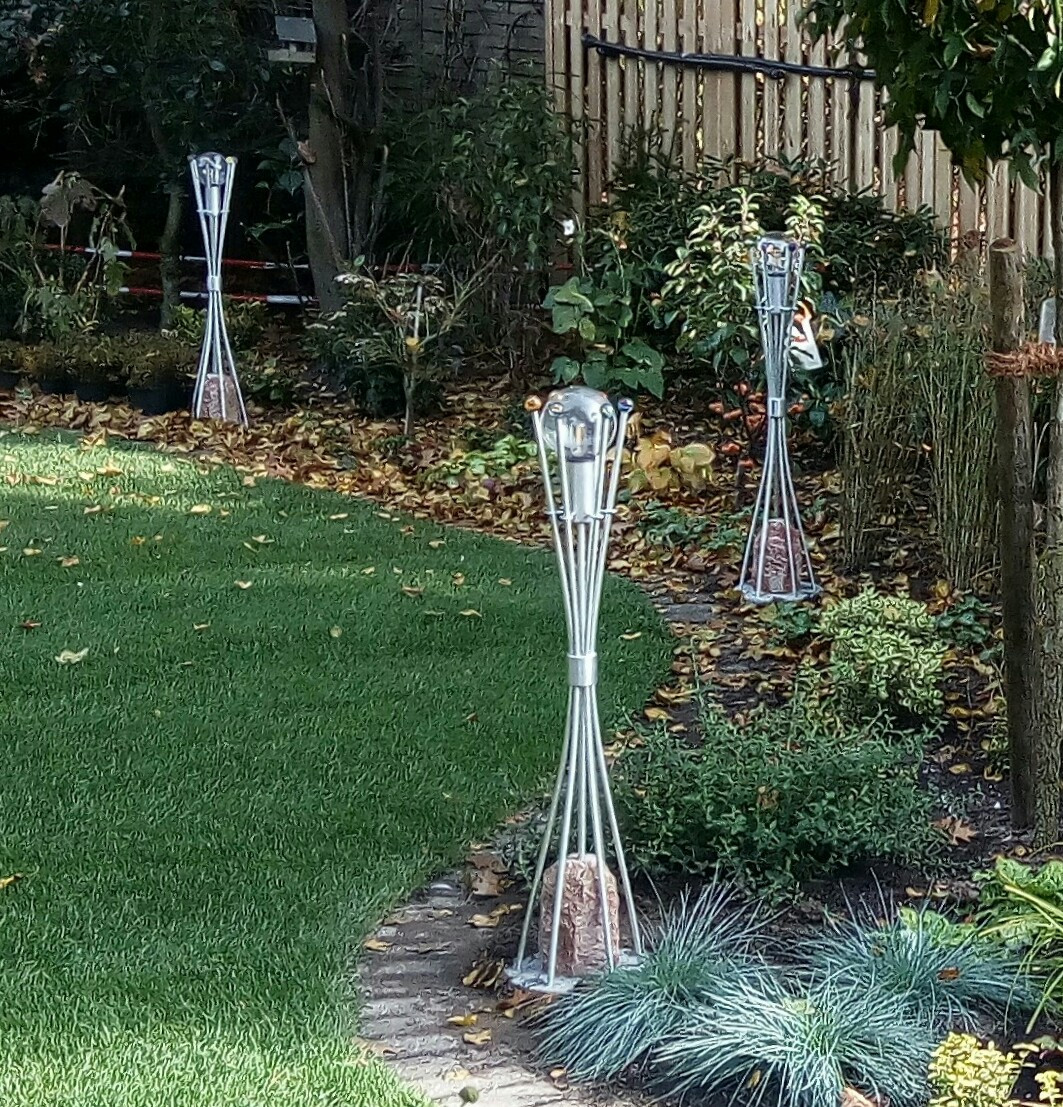
Most garden lamps tend to be rather massive. They usually consist of thick cylindrical or cuboid poles with a prominent light fixture on top. Their appearance creates a stark contrast with the organic shapes of plants and trees that surround them and prevents them from integrating with these natural elements over time. Even in a totally overgrown garden they would still stand out.
My aim was to come up with a garden lamp design that uses lighter components and allows the lamp to fuse with its surroundings over time, e.g., by allowing plants to grow into the structure of the lamp. The final design (Fig. 1) uses a set of aluminium tubes that fan out towards the bottom and the top creating an open frame. The bottom of the lamp consists of a circular granite disk that receives the outer aluminium tubes and houses the electrical connection. Within the open frame a concrete stone holds a central aluminium tube that guides the wiring to the top. There, a glass sphere sits in the fanned out aluminum frame hosting a common LED light bulb.


